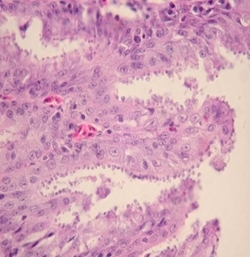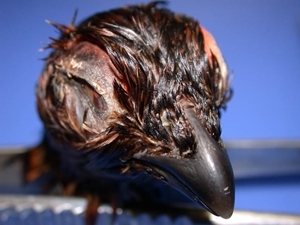 Q: Do wild birds carry disease-causing parasites?
Q: Do wild birds carry disease-causing parasites?
A: Yes. We expect to find parasites across all wild bird species; some live on the skin and feathers, while others are found inside them (for example, we know that wild grey partridges can carry up to 21 species of parasitic worm). Many of these parasites appear to have little or no effect on the host bird.
Q: So can wild birds die from these diseases?
A: Yes. And occasionally losses can be significant. In 2006 the British Trust for Ornithology (BTO) recorded a sudden loss of greenfinches and chaffinches caused by the disease Trichomonas gallinae.
Q: How significant are these diseases?
A: While farmers work closely with vets to control over 60 poultry diseases in their captive birds, many ecologists do not see disease in wild birds as a high priority. However, there is international evidence that the effects on wild birds are more important than realised. GWCT studies have shown that without intervention 64% of losses among wild grey partridges can be due to disease. Today’s gamekeepers often intervene if they observe disease among their gamebirds.
Q: How long has the GWCT been involved in research on disease and its control?
A: The GWCT was formed to study a severe outbreak of disease among wild grey partridges in 1931. Between 1933 and 1982 the GWCT recorded 2,972 post-mortems of diseased birds. Work on other gamebirds such as pheasants followed. The GWCT has been studying diseases in red grouse since 1980.
Q: What are the main lethal diseases in red grouse?
A: There are two: strongylosis and louping-ill.
Q: What is strongylosis?
A: Identified in 1911, it is caused by a small parasitic worm, Trichostrongylus tenuis, which burrows into the gut wall and reduces the digestive efficiency of the intestine. If the worm burden in a local grouse population becomes too high, significant losses of up to 90% can occur.
Q: Can strongylosis be treated?
A: Yes. The most common method to control this parasite is to use medicated grit, a technique developed by the GWCT. Researchers monitored what happened when some of the small bits of grit that grouse eat to break up their food and help digest it was coated with a worming drug. The results are impressive – few grouse now die from strongylosis if they consume medicated grit.
Q: What is louping-ill?
A: Louping-ill is caused by a virus transmitted to red grouse by the ticks commonly found on sheep and deer. The disease affects the nervous system of both sheep and red grouse and it can be fatal to both. Treatment has been developed by veterinary researchers and the GWCT. This relies on applying insecticides to sheep to kill the ticks and vaccinating them against the virus.
Q: So what is cryptosporidiosis?
A: A disease originally described in 1907, which is caused by one of the 18 different known species of single-celled organism from the Cryptosporidium group. From turkeys to kangaroos and fish, each Cryptosporidium species has a different host.
 Q: Which species affects birds?
Q: Which species affects birds?
A: Cryptosporidium baileyi. It has been reported worldwide in more than 30 bird species. It infects the sinuses of poultry, gamebirds and many other species of birds, causing swollen eyes and an excessive production of mucus; it is like a particularly nasty head cold.
Q: Why are virtually all recorded cases among captive birds?
A: We don’t know. It may be that the observation of symptoms and subsequent laboratory diagnosis are more likely to take place on captive birds where they are kept under close veterinary supervision.
Q: Can you confirm infection by observing a bird?
A: Some typical symptoms can be observed but we are researching how reliable these are as clinical indicators. Currently identification is done in a laboratory.
Q: When was it first reported in red grouse?
A: Clinical symptoms of Cryptosporidium baileyi were first reported in wild red grouse in 2010, but it was probably present before then.
Q: What about black grouse?
A: Recent post-mortems on two birds showing possible signs of Cryptosporidium baileyi infection have been negative.
Q: Where did it come from?
A: Nobody knows. It is possible that it has always been present in red grouse. Since laboratory testing began in 2010 about 50% of moors surveyed across northern England had red grouse that tested positive for Cryptosporidium baileyi.
Q: Why the current interest in Cryptosporidium ?
A: In August 2014 the Veterinary Record published the results of a GWCT 2012-13 disease survey of likely presence of cryptosporidiosis across English grouse moors. The results point to greater rates of infection on moors with higher red grouse densities than on low-density moors. However, this early survey work suggested very variable infection rates between moors.
Q: Other than this correlation, is there evidence that it is caused by higher grouse densities?
A: Not at present, but we are still looking.
Q: How many red grouse exhibit symptoms?
A: Our survey work has shown that up to 15% of grouse on a moor may show typical Cryptosporidium baileyi symptoms at any one time.
Q: Can a bird be infected but not show symptoms?
A: Yes. It is likely that more birds will be infected, but do not yet display symptoms.
Q: Can infected grouse recover?
A: Yes. We know that some birds can recover. However, mortality rates are estimated to be twice those of uninfected birds on the same moor.
Q: Can grouse that no longer show symptoms still be infectious?
A: Yes.
Q: Do infected birds still rear chicks?
A: Yes. However, infected birds rear only half as many.
Q: What else is the GWCT doing?
A: We have developed a joint research programme with vets and molecular biologists from the government’s Animal & Plant Health Agency (formerly the Animal Health and Veterinary Laboratories Agency) and in private practice to assist us with clinical analysis and diagnosis. These techniques underpin our future studies on Cryptosporidium baileyi.
Q: Is it easy to treat?
A: There doesn’t appear to be an effective treatment for wild birds experiencing the disease. On poultry farms, disease control is difficult because disinfectants have to be applied for long periods. Steam cleaning (above 65°C) is effective in cleaning buildings and equipment.
Q: Is Cryptosporidium baileyi infectious to humans?
A: No.